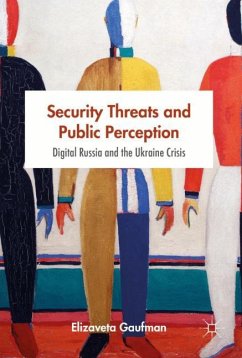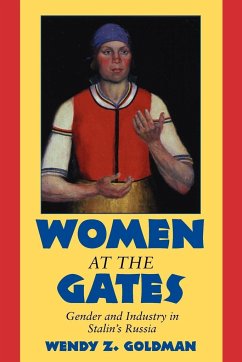
Pogroms
Anti-Jewish Violence in Modern Russian History
Herausgeber: Klier, John Doyle; Lambroza, Shlomo
Versandkostenfrei!
Versandfertig in 1-2 Wochen
39,99 €
inkl. MwSt.

PAYBACK Punkte
20 °P sammeln!
Distinguished scholars of Russian Jewish history reflect on the pogroms in Tsarist and revolutionary Russia.Three major waves of anti-Jewish rioting swept southern Russia and Russian Poland in the late nineteenth and early twentieth centuries. In this book, distinguished scholars of Russian Jewish history explore the origins and nature of these pogroms, which were among the most extensive outbreaks of antisemitic violence before the Holocaust. Using new approaches to the study of Russian history, the contributors examine each wave of violence in turn. They look at the role of violence in Russi...
Distinguished scholars of Russian Jewish history reflect on the pogroms in Tsarist and revolutionary Russia.
Three major waves of anti-Jewish rioting swept southern Russia and Russian Poland in the late nineteenth and early twentieth centuries. In this book, distinguished scholars of Russian Jewish history explore the origins and nature of these pogroms, which were among the most extensive outbreaks of antisemitic violence before the Holocaust. Using new approaches to the study of Russian history, the contributors examine each wave of violence in turn. They look at the role of violence in Russian society; the prejudices, stereotypes, and psychology of both the educated society and the rural masses; the work of the Tsarist regime, especially the police and the army as agents of order and control; and the impact of the pogroms on the sense of Jewish identity and security in the Empire. In his conclusion, Hans Rogger compares these riots with both pogroms elsewhere in Europe and anti-Negro violence in the United States during the same period.
Table of content:
Part I. General Introduction: 1. Russian Jewry on the eve of the pogroms John D. Klier; 2. The pogrom paradigm in Russian history John D. Klier; Part II. The Pogroms of 1881-1884: 3. The anti-Jewish pogroms in Russia in 1881 I. Michael Aronson; 4. 'Black repartition' and the pogroms of 1881-1882 Moshe Mishkinsky; 5. Cosomopolitanism, antisemitism, and populism: a reappraisal of the Russian and Jewish socialist response to the pogroms of 1881-1882 Erich Haberer; Part III. The Impact of the First Pogrom Wave: 6. The development of the Russian Jewish community, 1881-1903 Alexander Orbach; 7. Tsarist officialdom and anti-Jewish pogroms in Poland Michael Ochs; Part IV. The Pogroms of 1903-1906: 8. The pogroms of 1903-1906 Shlomo Lambroza; 9. The pogrom of 1905 in Odessa: a case study Robert Weinberg; Part V. The Pogroms of 1919-1921: 10. Pogroms and white ideology in the Russian civil war Peter Kenez; Conclusion and overview Hans Rogger; Bibliographical essay Avraham Greenbaum.
Three major waves of anti-Jewish rioting swept southern Russia and Russian Poland in the late nineteenth and early twentieth centuries. In this book, distinguished scholars of Russian Jewish history explore the origins and nature of these pogroms, which were among the most extensive outbreaks of antisemitic violence before the Holocaust. Using new approaches to the study of Russian history, the contributors examine each wave of violence in turn. They look at the role of violence in Russian society; the prejudices, stereotypes, and psychology of both the educated society and the rural masses; the work of the Tsarist regime, especially the police and the army as agents of order and control; and the impact of the pogroms on the sense of Jewish identity and security in the Empire. In his conclusion, Hans Rogger compares these riots with both pogroms elsewhere in Europe and anti-Negro violence in the United States during the same period.
Table of content:
Part I. General Introduction: 1. Russian Jewry on the eve of the pogroms John D. Klier; 2. The pogrom paradigm in Russian history John D. Klier; Part II. The Pogroms of 1881-1884: 3. The anti-Jewish pogroms in Russia in 1881 I. Michael Aronson; 4. 'Black repartition' and the pogroms of 1881-1882 Moshe Mishkinsky; 5. Cosomopolitanism, antisemitism, and populism: a reappraisal of the Russian and Jewish socialist response to the pogroms of 1881-1882 Erich Haberer; Part III. The Impact of the First Pogrom Wave: 6. The development of the Russian Jewish community, 1881-1903 Alexander Orbach; 7. Tsarist officialdom and anti-Jewish pogroms in Poland Michael Ochs; Part IV. The Pogroms of 1903-1906: 8. The pogroms of 1903-1906 Shlomo Lambroza; 9. The pogrom of 1905 in Odessa: a case study Robert Weinberg; Part V. The Pogroms of 1919-1921: 10. Pogroms and white ideology in the Russian civil war Peter Kenez; Conclusion and overview Hans Rogger; Bibliographical essay Avraham Greenbaum.














